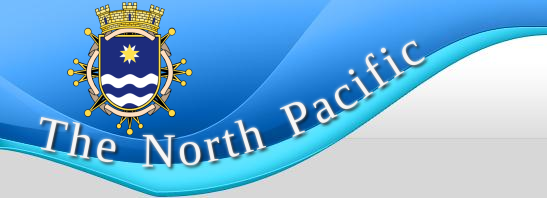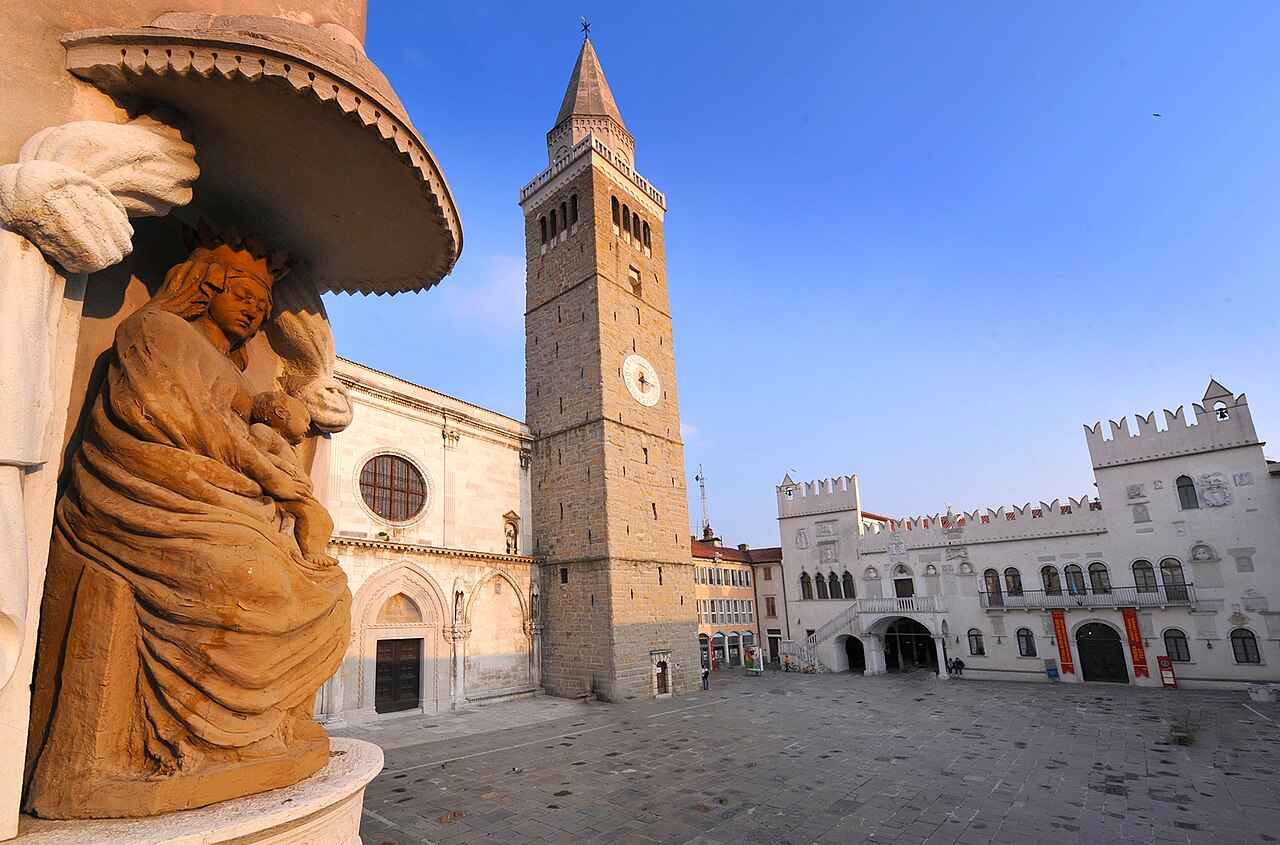Pikabo
Registered
Mezoraico | Predicica (www.predicica.com/place/Mezoraico)
Mezoraico
Cravitera Centrale, Imperio de la Mezlandoj, Impero dei Paesi Mezzo, Mezolandoj, Mittelreich

Aerial view of the Grand Harbor, Sankta Kruco
Mezoraico, officially the Empire of the Middle Countries, or just the Middle Countries, is a member state of the Predicean Union. Situated at a geographic crossroads, it links the fertile lowland plains of East Craviter and the sea lanes of the Argent Sea and the Auburn Channel to the mountainous highlands of Central Craviter. Now bounded by six nations, it has waxed and waned over the centuries, buffeted by the forces of regional history.
In 43 AD, the Argent conquest of Mezoraico began. In 863, Lech the Szlav liberated much of Mezoraico, made governor by Dominar Andronikas I, and when the Argent Imperium ended in 1137, the wiecze, an assembly of Borseanist, Zmeyist, and Zuist rulers, elected their own dominarz to lead the Middle Countries. The dominarz's were native rulers until the Central Crusades conquered Mezoraico by 1291. Andrennian, Doriveran, and Waltalricher soldiers and mercenaries participated. The largest Crusader state, the Kingdom of Sankta Kruco, was established by the House of Mavoia. Essalanean raids in the early 14th Century forced the crusader states to swear fealty to the Kings of Alemriche in the west. To the east, the southern crusader states formed the Kingdom of Rabensburg while the northern crusader states joined Sankta Kruco. In 1482, Sankta Kruco united the Crusader states in Mezoraico. The mass expulsions of pagan Gotics and Szlavs freed up land for Courantist colonization. Resettlement agreements were negotiated via territorial readjustments with the Duchy of Sillanais, Essalanea, and Khastenia. In 1797, the Empire entered a personal union under Predice. Its status was reduced to a protectorate. In the Wars of the Callisean Republic, Chevalier partitioned the western half of the Empire to the First Khastenian Republic and created two sister republics in the remaining territory, Alemania and Tristain. After Callise fell to the Nordic Coalition in 1817, the Predicean government granted more powers to the General Veče as part of negotiations to maintain the union.
The unique blend of Gothi, Kylian, and Szlavic nations and peoples created a cosmopolitan society: Cxjusono, a Gotic-Kylian language, is the only recognized national language. Predicean is the sole language for legislation; and both languages are used along with Aleman for administrative affairs. National scientists, musicians, filmmakers, and writers came from Alemaners, Arrandalis, Calliseans, Essaleneans, and Ereionese. Local governments incorporated ideals of the Callisean Republic, the Supreme Law of Goyanes, and the Santonian Revolution. In 1822, the Empire was granted representation in the Predicean Parliament. Mezoraico was granted independence in 1931 to join the Predicean Union, a confederation of made up of Predice and its former colonial empire.
In the 1930s the exploitation of oil and natural gas became the major industry, with Mezoraico emerging in the 1940s as one of the world’s leading petroleum exporters. Predice, Andrenne, and Maloria were the main benefactors of the oil concessions. During the Fascist War, in defense preparations for a Dominion invasion in Craviter, a million-man defense force was assembled by the local Mezocano Army and the Predicean and Caruiano expeditionary troops. In 1945, Maloria occupied the constituent Kingdom of Tristain. In the west, the free territories of Mezoraico became a base of operations for various resistance movements of occupied Craviterian neighbors. The occupation ended in 1947. Peace was restored in 1950.
The PU Common Market, reconstruction funds, and reparations helped restart the Mezocano economy. It was overseen by the ruling Popola Ligo, originally the local affiliate of Predice's Messianist Democracy. Political and economic reforms abolished the last feudal institutions and transformed Mezoraico into a liberal democracy. It became an important manufacturing center of the PU. The Ligo built a comprehensive welfare state, including a national insurance and inclusive unemployment benefits. The government retained wartime controls over the economy, such as resource allocation, employment, and critical industries, including the railways, public utilities, and much of heavy industry. The oil industry is jointly and privately owned by concerns based in Andrenne and Predice.
Mezoraico has a parliamentary system with its bicameral legislature comprising of the Chamber of States, representing the constituent monarchies and provinces, and the Central Legislative Council, elected by universal suffrage. It is a developed market and high-income economy. It has a very high standard of living and safety, and it offers free university education and universal healthcare to its youth.
Quick Facts
Mezoraico
Cravitera Centrale, Imperio de la Mezlandoj, Impero dei Paesi Mezzo, Mezolandoj, Mittelreich

Aerial view of the Grand Harbor, Sankta Kruco
Mezoraico, officially the Empire of the Middle Countries, or just the Middle Countries, is a member state of the Predicean Union. Situated at a geographic crossroads, it links the fertile lowland plains of East Craviter and the sea lanes of the Argent Sea and the Auburn Channel to the mountainous highlands of Central Craviter. Now bounded by six nations, it has waxed and waned over the centuries, buffeted by the forces of regional history.
In 43 AD, the Argent conquest of Mezoraico began. In 863, Lech the Szlav liberated much of Mezoraico, made governor by Dominar Andronikas I, and when the Argent Imperium ended in 1137, the wiecze, an assembly of Borseanist, Zmeyist, and Zuist rulers, elected their own dominarz to lead the Middle Countries. The dominarz's were native rulers until the Central Crusades conquered Mezoraico by 1291. Andrennian, Doriveran, and Waltalricher soldiers and mercenaries participated. The largest Crusader state, the Kingdom of Sankta Kruco, was established by the House of Mavoia. Essalanean raids in the early 14th Century forced the crusader states to swear fealty to the Kings of Alemriche in the west. To the east, the southern crusader states formed the Kingdom of Rabensburg while the northern crusader states joined Sankta Kruco. In 1482, Sankta Kruco united the Crusader states in Mezoraico. The mass expulsions of pagan Gotics and Szlavs freed up land for Courantist colonization. Resettlement agreements were negotiated via territorial readjustments with the Duchy of Sillanais, Essalanea, and Khastenia. In 1797, the Empire entered a personal union under Predice. Its status was reduced to a protectorate. In the Wars of the Callisean Republic, Chevalier partitioned the western half of the Empire to the First Khastenian Republic and created two sister republics in the remaining territory, Alemania and Tristain. After Callise fell to the Nordic Coalition in 1817, the Predicean government granted more powers to the General Veče as part of negotiations to maintain the union.
The unique blend of Gothi, Kylian, and Szlavic nations and peoples created a cosmopolitan society: Cxjusono, a Gotic-Kylian language, is the only recognized national language. Predicean is the sole language for legislation; and both languages are used along with Aleman for administrative affairs. National scientists, musicians, filmmakers, and writers came from Alemaners, Arrandalis, Calliseans, Essaleneans, and Ereionese. Local governments incorporated ideals of the Callisean Republic, the Supreme Law of Goyanes, and the Santonian Revolution. In 1822, the Empire was granted representation in the Predicean Parliament. Mezoraico was granted independence in 1931 to join the Predicean Union, a confederation of made up of Predice and its former colonial empire.
In the 1930s the exploitation of oil and natural gas became the major industry, with Mezoraico emerging in the 1940s as one of the world’s leading petroleum exporters. Predice, Andrenne, and Maloria were the main benefactors of the oil concessions. During the Fascist War, in defense preparations for a Dominion invasion in Craviter, a million-man defense force was assembled by the local Mezocano Army and the Predicean and Caruiano expeditionary troops. In 1945, Maloria occupied the constituent Kingdom of Tristain. In the west, the free territories of Mezoraico became a base of operations for various resistance movements of occupied Craviterian neighbors. The occupation ended in 1947. Peace was restored in 1950.
The PU Common Market, reconstruction funds, and reparations helped restart the Mezocano economy. It was overseen by the ruling Popola Ligo, originally the local affiliate of Predice's Messianist Democracy. Political and economic reforms abolished the last feudal institutions and transformed Mezoraico into a liberal democracy. It became an important manufacturing center of the PU. The Ligo built a comprehensive welfare state, including a national insurance and inclusive unemployment benefits. The government retained wartime controls over the economy, such as resource allocation, employment, and critical industries, including the railways, public utilities, and much of heavy industry. The oil industry is jointly and privately owned by concerns based in Andrenne and Predice.
Mezoraico has a parliamentary system with its bicameral legislature comprising of the Chamber of States, representing the constituent monarchies and provinces, and the Central Legislative Council, elected by universal suffrage. It is a developed market and high-income economy. It has a very high standard of living and safety, and it offers free university education and universal healthcare to its youth.
Quick Facts

Flag of Mezoraico
Anthem: Inno da Carta
Head Of State:
Craviterian Emperor: Vittorio Emanuele II
Regent: Archduke Matthias VIII of Mittelreich
Head Of Government:
State Chancellor: Ritter Wilhelm von Städtler III
Capital: Sankta Kruco
Population:
(2024 est.) 77,300,500
Currency exchange:
1 IBU equals ₤1.83
Form of Government:
Federal constitutional monarchy
with two legislative houses
(Chamber of States [58]; Central Legislative Council [399])
National Language:
Cxjusono
Official Languages:
Predicean, Aleman
Official Religion:
Courantism
Official Name:
Cxjusono:
Imperio de la Mezlandoj
Predicean:
Impero dei Paesi Mezzo
(Empire of the Middle Countries)
Total Area (Sq Km):
501,566
Total Area (Sq Mi):
193,655
Monetary unit:
Predicean lira (₤)
Density: Persons Per Sq Km: (2024)
154.1
Literacy: Percentage Of Population
Age 15 And Over Literate:
Male: (2021) 100% Female: (2021) 100%
GDP (Nominal):
(2024) 2.974 trillion IBU
GDP per capita (Nominal):
38,473 IBU
Last edited:



